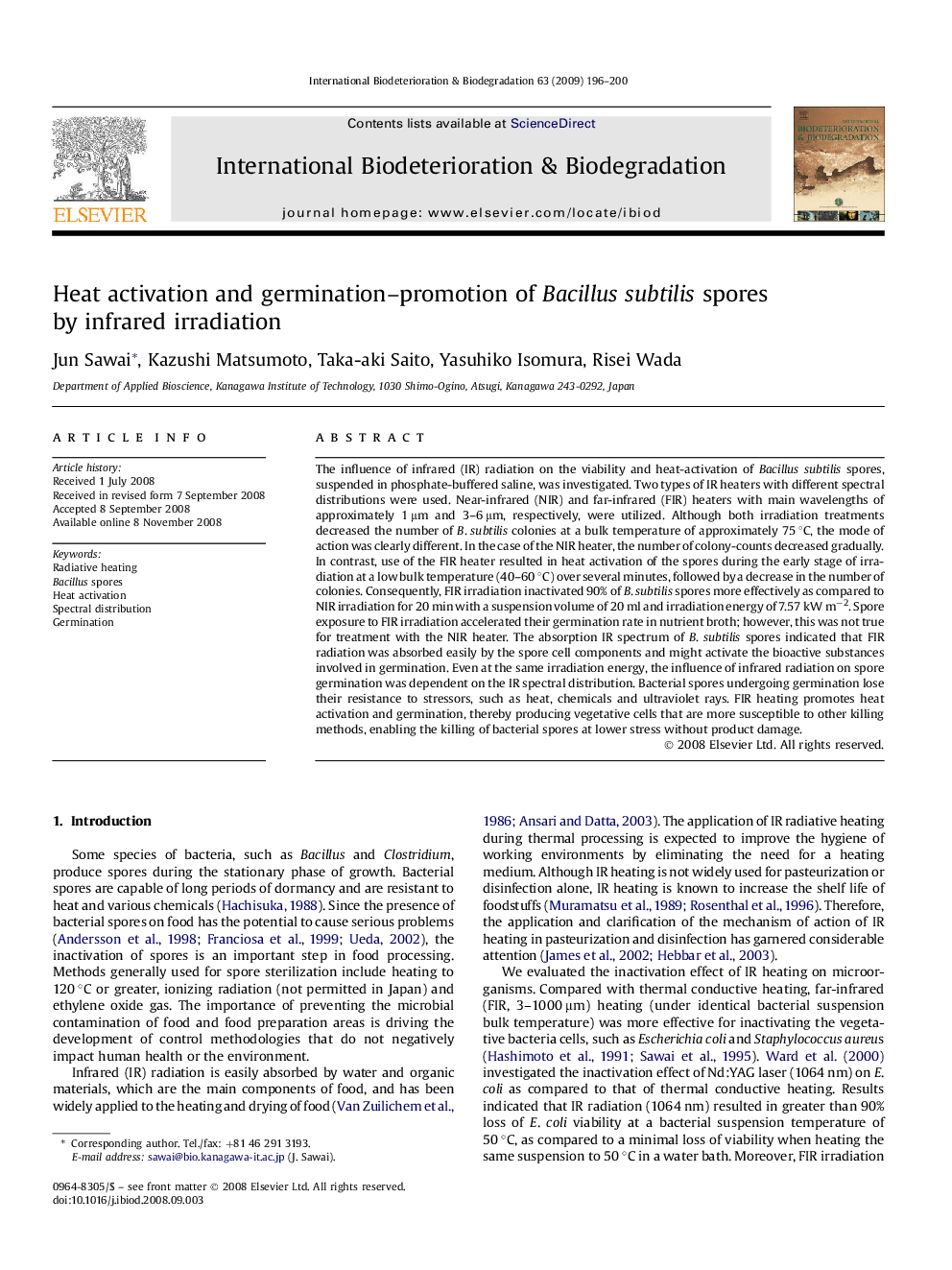| Article ID | Journal | Published Year | Pages | File Type |
|---|---|---|---|---|
| 4365440 | International Biodeterioration & Biodegradation | 2009 | 5 Pages |
Abstract
The influence of infrared (IR) radiation on the viability and heat-activation of Bacillus subtilis spores, suspended in phosphate-buffered saline, was investigated. Two types of IR heaters with different spectral distributions were used. Near-infrared (NIR) and far-infrared (FIR) heaters with main wavelengths of approximately 1 μm and 3-6 μm, respectively, were utilized. Although both irradiation treatments decreased the number of B. subtilis colonies at a bulk temperature of approximately 75 °C, the mode of action was clearly different. In the case of the NIR heater, the number of colony-counts decreased gradually. In contrast, use of the FIR heater resulted in heat activation of the spores during the early stage of irradiation at a low bulk temperature (40-60 °C) over several minutes, followed by a decrease in the number of colonies. Consequently, FIR irradiation inactivated 90% of B. subtilis spores more effectively as compared to NIR irradiation for 20 min with a suspension volume of 20 ml and irradiation energy of 7.57 kW mâ2. Spore exposure to FIR irradiation accelerated their germination rate in nutrient broth; however, this was not true for treatment with the NIR heater. The absorption IR spectrum of B. subtilis spores indicated that FIR radiation was absorbed easily by the spore cell components and might activate the bioactive substances involved in germination. Even at the same irradiation energy, the influence of infrared radiation on spore germination was dependent on the IR spectral distribution. Bacterial spores undergoing germination lose their resistance to stressors, such as heat, chemicals and ultraviolet rays. FIR heating promotes heat activation and germination, thereby producing vegetative cells that are more susceptible to other killing methods, enabling the killing of bacterial spores at lower stress without product damage.
Related Topics
Life Sciences
Environmental Science
Environmental Science (General)
Authors
Jun Sawai, Kazushi Matsumoto, Taka-aki Saito, Yasuhiko Isomura, Risei Wada,
